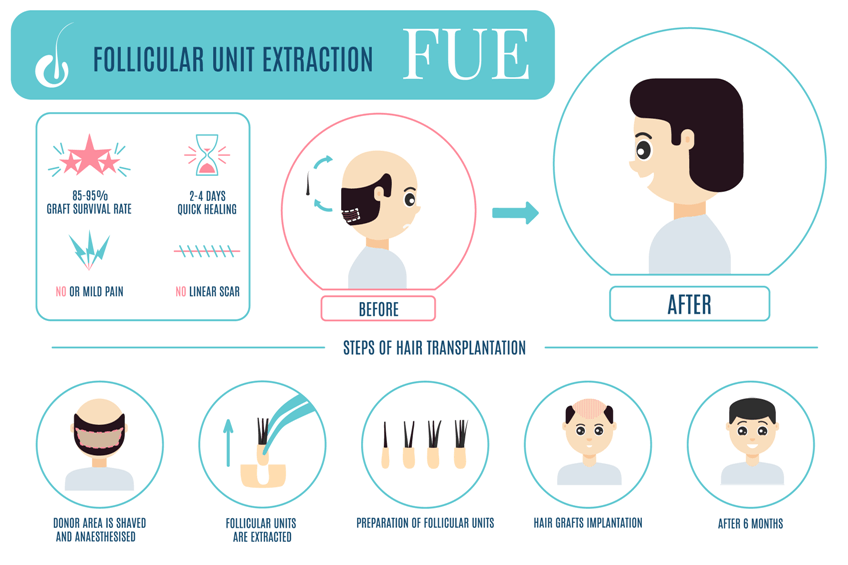
Drawbacks of Traditional FUE
The 1st Generation FUE was introduced as an alternative to strip harvesting in FUT. Follicular units were directly punched out one-by-one from the donor scalp. It is a modification of the old school Punch Graft used by Dr Orentrich, except a 0.8 to 1.0-mm diameter smaller punch was used instead of a 4mm biopsy punch.
It has 5 disadvantages:
1. Limited Number of Grafts unable to achieve High Density Grafting
2. Graft Damage ( Transection ) during Punch Harvesting
3. Unsightly Donor Areas ( Dotting, Thinning, and Mottling )
4. Long Surgery Time and Slow Recovery
5. Expensive
What is FUE-HD
"HD" stands for High Density. In recent years we have combined and modified the Europen-USA FUE techniques to accommodate for high density implantation. The incisons are smaller with much less bleeding and trauma to the recipient site. This markedly reduces the downtime, and patients can resume normal activities just after a few days.
The 3 Objectives and 7 Elements
Our FUE-HD is a breakthrough that has overcome the above drawbacks of traditional FUE. Rather than just a technique extracting and re-implantation hair follicles, this is a system combining the latest technique and bio-technology. This 3rd Generation FUE-HD represents our commitment to whole-person caring using 7 key Elements to achieve the 3 objectives:
3-Objectives
1. Achieves long lasting natural-looking dense result;
2. Preserves grafts for future use;
3. Minimal disfiguring to the donor site
7-Elements
1. Our 0.8mm Wide-Mouth Punch
2. Semi-Automatic Extraction Device
3. Key Areas Transplant for Wider Coverage
4. Sequential FUE Technique
5. Partial-Stem Cell Graft Isolation
6. No Touch Graft Insertion
7. ATP-Laser Biotechnology
The 7 Elements

1. Our 0.8mm Wide-Mouth Punch
Graft transection is the main drawback in FUE. In 2017 we started to develop our own punch, Our punch has a wider opening in the shape of a funnel, and is known as the "Funnel Punch". With this we are able to markly reduce the graft transection rate. In 2017 our punch was on producion and now used by hair transplant surgeon all over the world.

2. Manual-Automatic Systems Combined
After learning Dr John Cole (USA) CIT System, Dr Umar (USA) U-System, Dr Devroye (Belgium) WAW System, Dr Trivellini (Italy) Mamba Device, and many other technique and devices in the last 14 years, we feel that the human touch is as important as any latest technology. Our FUE -HD system combines both manual and automatic extraction to cater for different skin texture and hair characters.

3. Key Areas Transplant
We first presented this Key Area Transplant Approach in ISHRS Annual Scientific Meeting ( Bahama ) back in 2010. The concept is that you don't need hair in every part of your balding scalp to look good. Instead hairs are implanted along the hairline and parting side to comb over. This approach allows a larger area coverage using a lesser number of grafts. Our results in Class V to VI cases are most impressive. Patients can always return for a second procedure to extend the coverage.
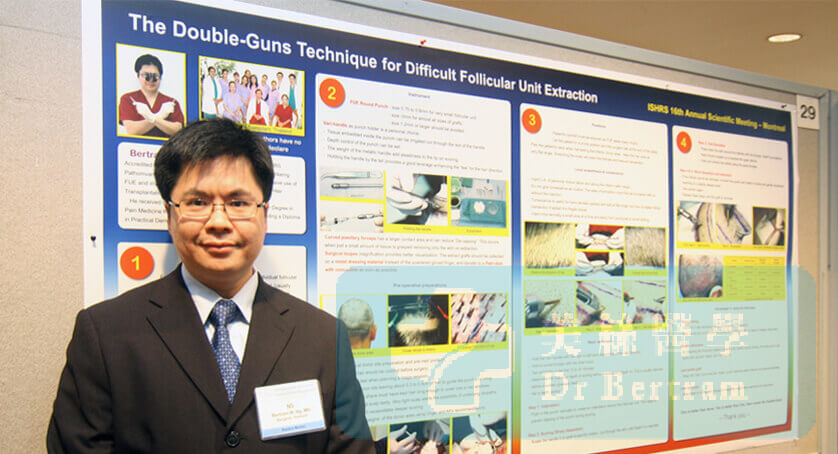
4. Using Our Sequential Technique
In 2018 we had developed a new technique using both hands for excision and extraction simutaneously to reduce the graft harvesting time. This so-called "Double Gun Technique" was first presented in the 2008 ISHRS Annual Scientific Meeting in Montreal, Canada, In 2018 the ISHRS FUE Committee re-named it "Sequential FUE Technique". Our technique is currently used by many doctors in Europe.

5. Partial-Stem Cell Graft Isolation
With our skill we are able to cut a 3 or 4-hair follicular unit longitudinally into 2 intact halves. One half is removed for re-implantation as usual, while the other left behind to regrow. Studies had shown that the remnant can regenerate completely. This technique has the potential to generate two hair follicles from one follicle with consistent results and preserve the donor area.
Read More
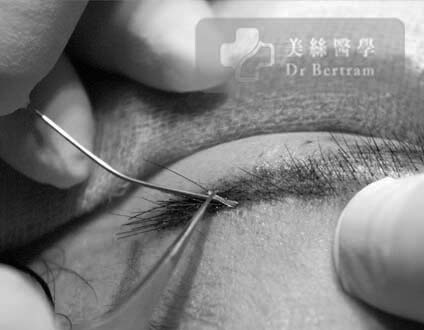
6. No Touch Graft Insertion
Grafts outside the body has a limited survival time and must be implanted ASAP. We have abandoned the use of implanters as they produce more tissue trauma by squeezing the graft into a metal tube, and with a bigger wound. Instead we use forceps to grasp the shaft and inserted the graft into a snug-fit holes as 1 step without touching the fragile root. This allows for denser packing.
Read More

7. Using Latest Bio-technology
The final result of hair transplant depends on how many grafts actually re-grow after the procedure. Damaged hair follicles may not produce new hair. Our FUE -HD combines the followings to enhance graft survival :
• ATP Energy Spray and Storage Solution
• Low Level Laser Therapy
• Tricomin Copper Peptide Hair Solution
Read More
Objective 1. Achieves long lasting natural-looking dense result;
Number of Grafts Extracted Per Session
Our record was 5,500 hairs extracted in one single session. The normal range is from 2,500 to 3,500 hairs in Asians, and more for Caucasians, depending the surgical plan and donor density.
Hours of Extraction
Any extracted follicles should be re-implanted as soon as possible. We allow 2-4 hours on extraction, and another 2 hours to inserted into the recipient site. So the whole procedure may last just 5 hours with minimal discomfort. Can we do any faster? No ! We would not sacrifice graft quality to speed up extraction。
Number of days for FUE-HD
We are only offering one day session. Reasons are :
• tiring for the patient lying face down for 4-5 hours in 2 consecutive days
• local anesthesia has to be injected again, more painful and risky
• too much injection on same area disrupts blood and nutrient supply to hair follicles implanted in Day 1
• grafts transplanted on day 1 may be damaged on the second day
• difficult to predict how many grafts can be extracted the second day
More Viable Grafts
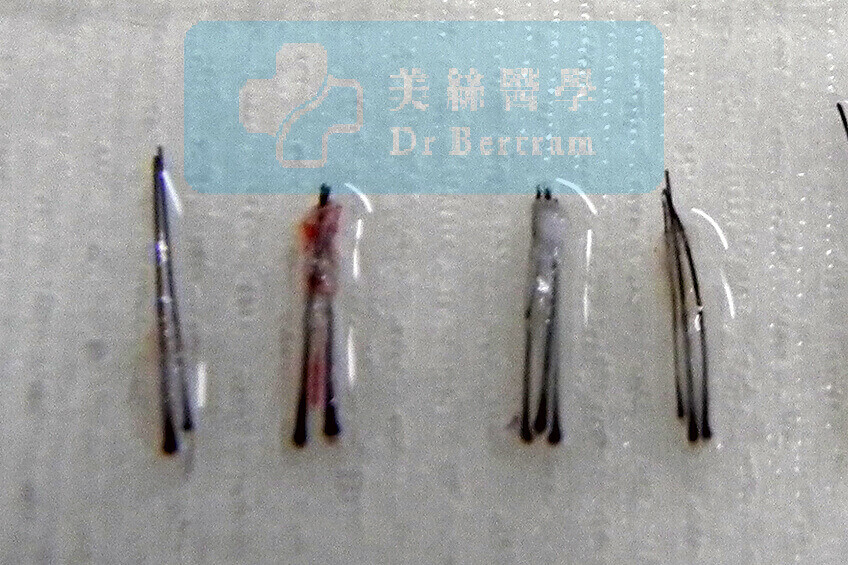
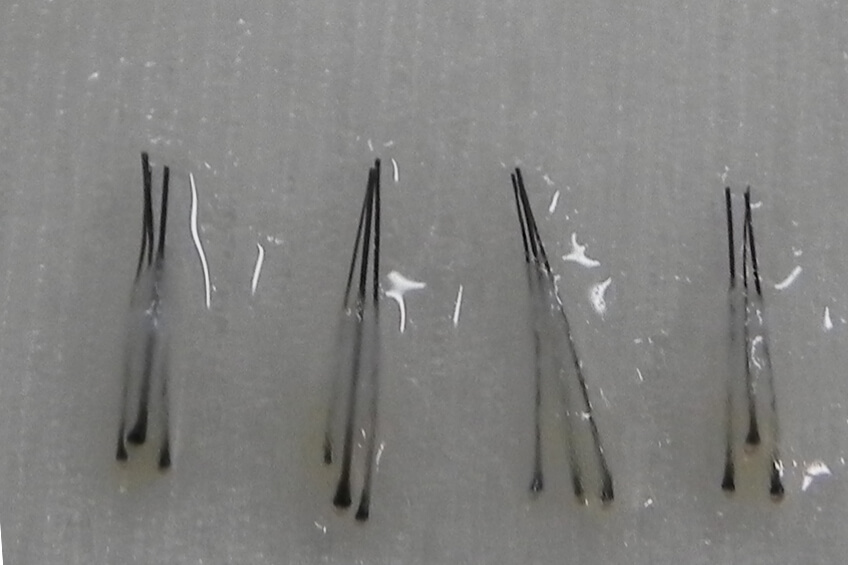
Can be Combined with FUT as COMBO
We have been combining FUE-HD and FUT as COMBO to maximize the number of grafts!
Lower the Cost of Procedure
When more grafts survive, less is required to complete the job. As most hair transplant centers charge "per graft transplanted" not "per graft survives", a higher survival will bring the cost down. Having say that, money cannot buy back a wastage of good donor hair follicles.
We are able to offer good value for money service by reducing unnecessary running cost :
• Our FUE -HD system does not require any expensive set-up and maintenance cost as in ARTAS
• less complications and legal matters
• well organized team work
FINAL OUTCOME
With more viable grafts, a high density Implant & better result can be achieved at a reasonable cost.
Objective 2. Preserves grafts for future use
Importance Of Graft Survival
After a person is born, there will not be an additional hair follicle. The permanent hair follicles at the back of our head, the donor site, are invaluable and cannot be replaced. Many people expect hair follicles to be cloned, but the date of success is an unknown. The priority is to minimize the trauma of hair follicles during the process of hair transplantation. Over the past 50 years, many studies have been conducted to look at the actual survival rate of transplanted hair, and the percentage growth, reporting the following findings :
• Hair is considered an “organ” for transplantation
• Like other organs, they must be carefully stored after leaving the body, otherwise they will die
• Damaged hair follicles may not produce new hair after transplantation
• Generally requires at least 85% of transplanted hair to grow to see result
• The causes of hair follicle damage can be divided into " H-Factor " and " X-Factor "
Read More

Graft Survival, Donor Depletion, and Future Sessions
Hair transplant is challenged by the limited donor supply. Until now Hair Cloning is still not available. The best way to ensure adequate supply of hair follicles for the next procedure is to minimize graft wastage in the first session.
OUR MISSION
Even if cloning is available in the future, it won't be cheap. So why not put more thought into how to properly utilize your limited number of permanent hair follicles and avoid wastage.
Objective 3. Minimal disfiguring to the donor site
Quick Recovery and Less Downtime
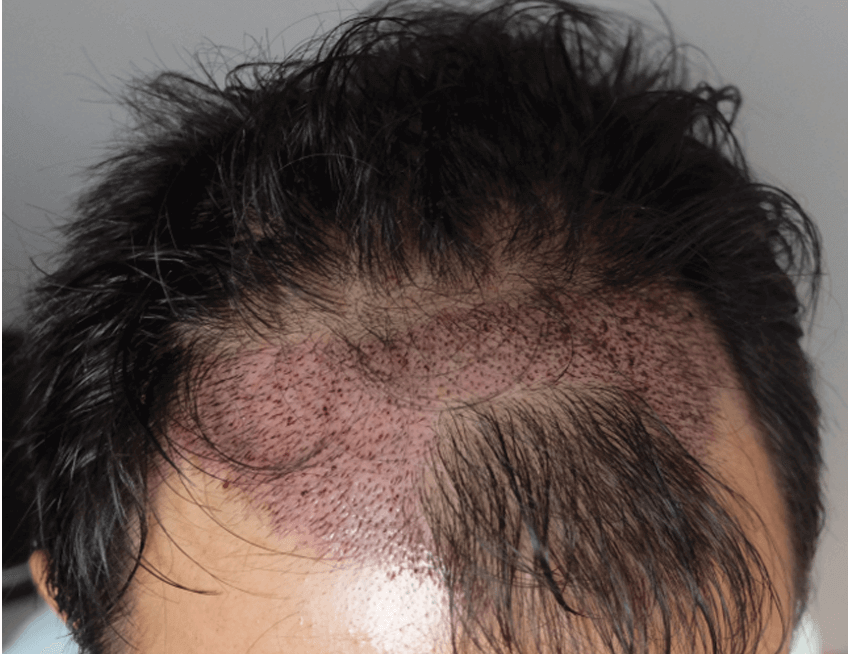
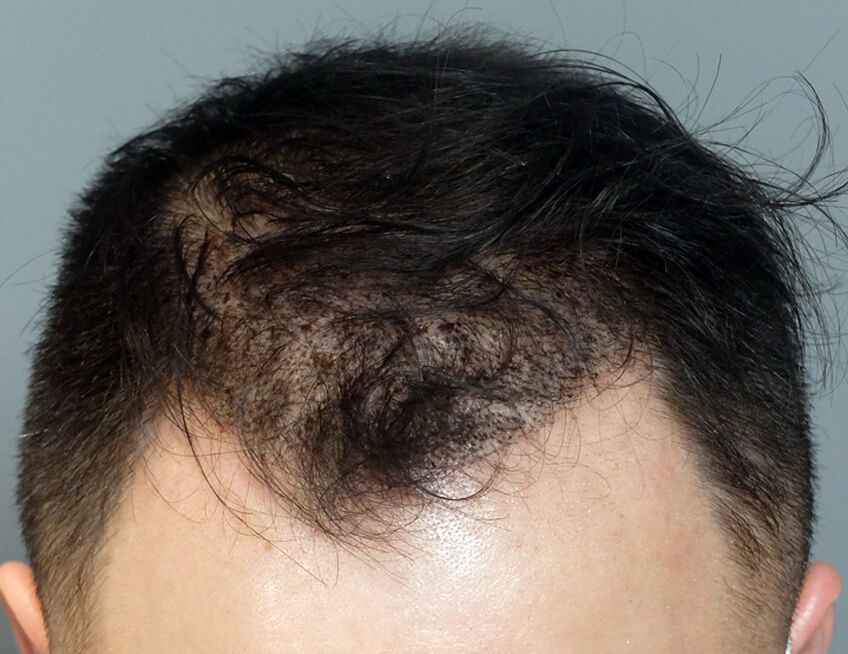
FUE-HD makes use of 0.8mm punch and direct graft insertion. This reduces the sizes of wound in the recipient site leading to quick healing and less complications. The Recipient almost looks normal after a week with no swelling.
Better Donor Area Healing
All skin surgery including FUE produce scar. Our FUE -HD combines the following to prevent any unsightly donor site appearance after extraction :
• good infection control and proper aftercare
• use very small punch for extraction to reduce skin trauma
• reduce graft transection and wastage
• use a larger area for extraction to evenly disperse the punch holes
• camouflage the white patches using SMP or Scalp Micropigmentation
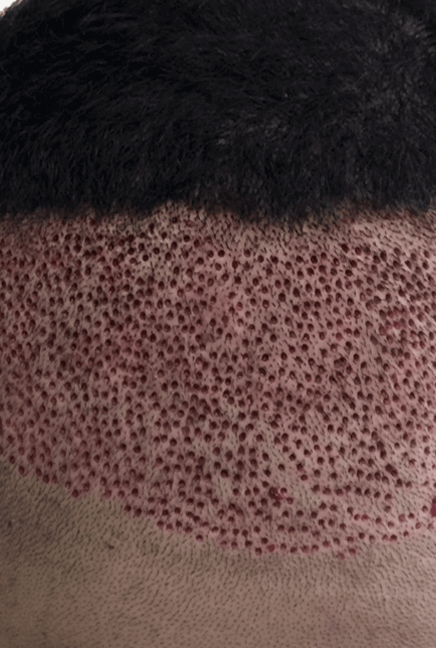
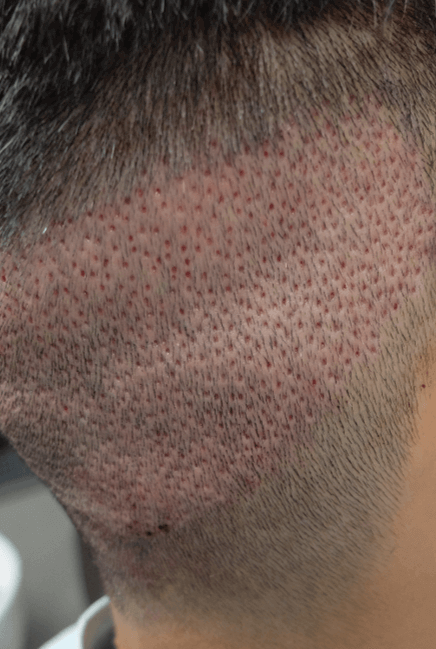
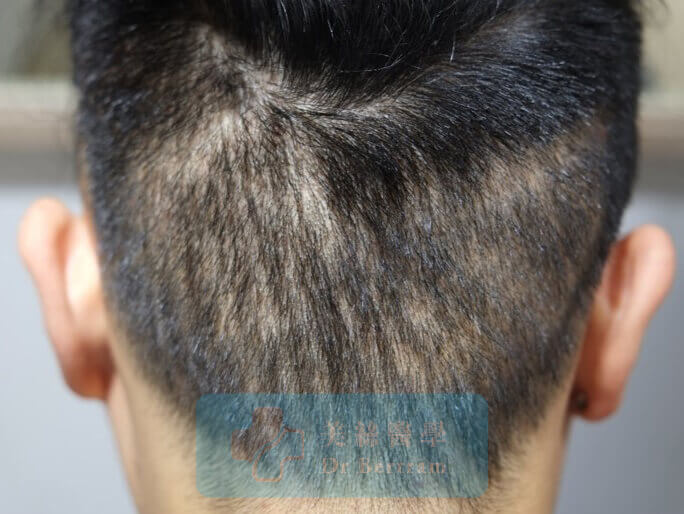
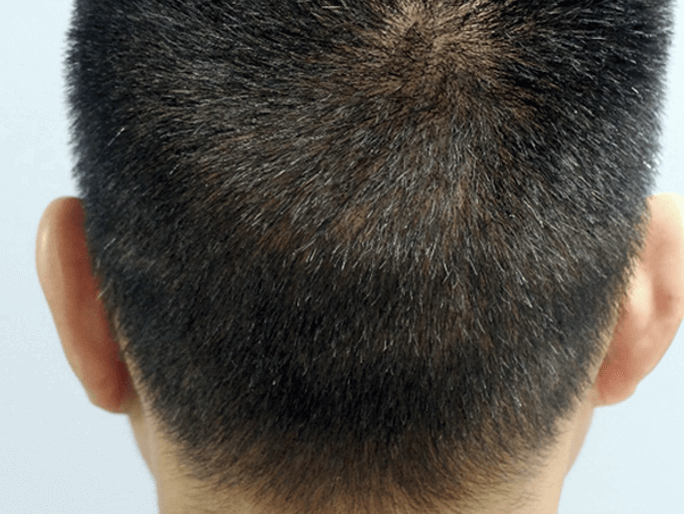
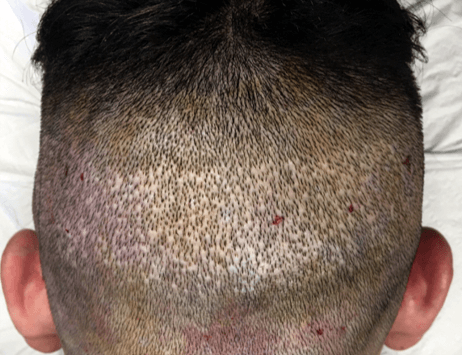
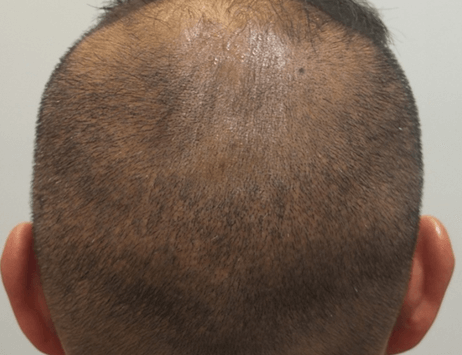
Who Should Consider FUE-HD ?
The Majority of Patients
Witnessing the outstanding result with minimal downtime, FUE-HD is now our technique of choice accounting for 85% of all procedures.
Afraid of Surgery
Most of our patients demand FUE -HD because they cannot tolerate the thought of having a cut at the back of their heads ( FUT ).
Skin Head or Military-Cut Hair Style
For those who prefer to keep hair very short at the back of the head, FUE -HD is the only option.
Do Not Want Scar or Keloid Prone
With our very small punch size, FUE -HD would be a much better choice that FUT-STRIP
Low Donor Density
When the hair density is low in the donor site, the FUT linear scar would be visible even if hair is kept long.
Small Jobs or the Very Young
For the youngsters or when only a few hundred grafts is required, it may not worth leaving a scar behind. FUE -HD is quite suitable under these circumstances especially when total shaving of the donor area is not required.
When Strip is Not Posible
When the patients already has a few FUT-Strip removed previously or simply because the scalp is just too tight or thin to remove a strip .
Do I Have to Shave for FUE-HD ?
Partial Shave
• Possible for under 2,000 Hairs
• More hair can be extracted for female or those with high donor density
• Keep at least 4cm of hair at the back of the head to cover the square slot
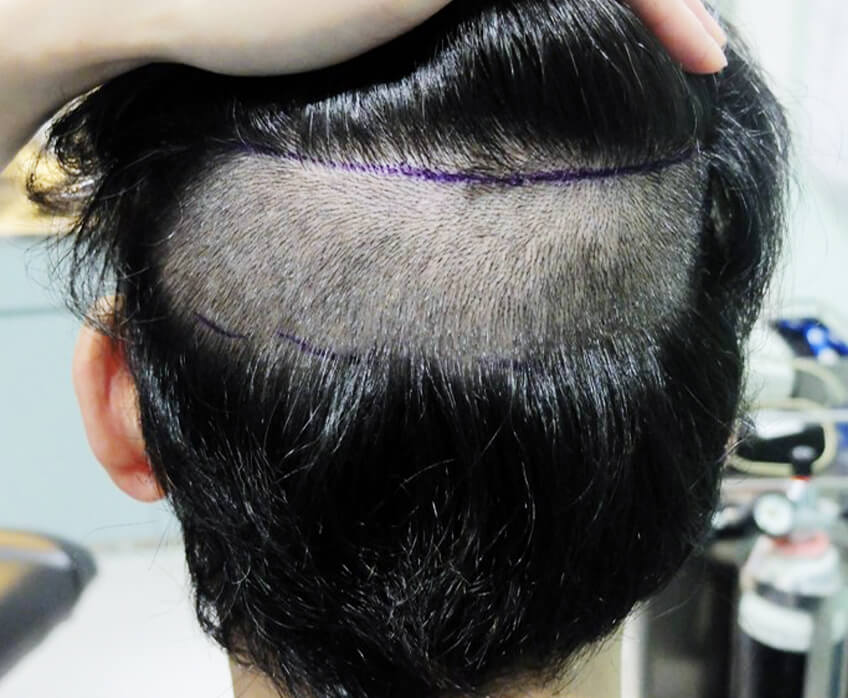
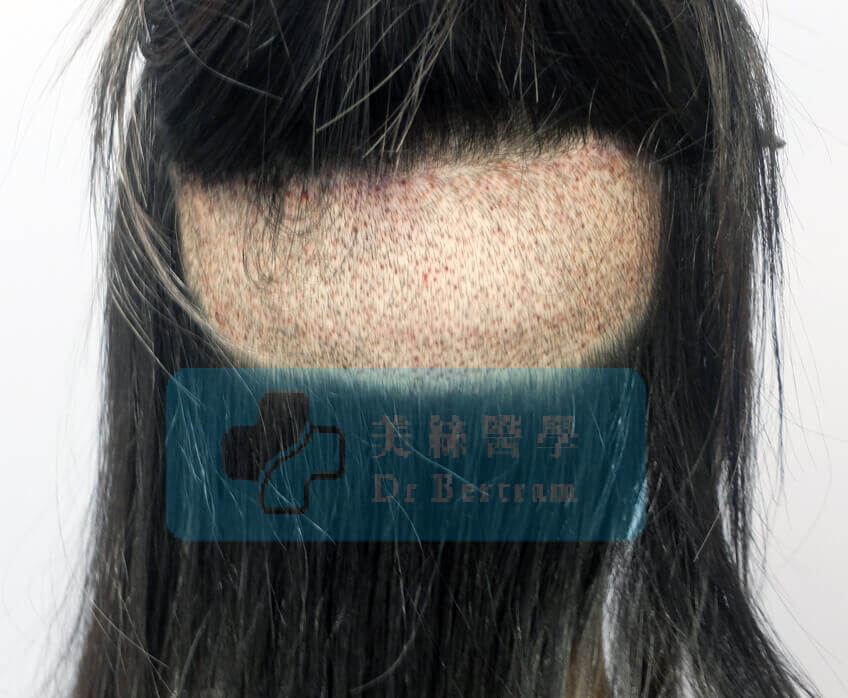
Full Shave
• Usually required for large area transplant
• Recommend to keep very short hair for 1-2 weeks before for the friends to get used to
• We will trim it further on the day of procedure
• With smaller incisions, patients can resume normal activities after a few days.
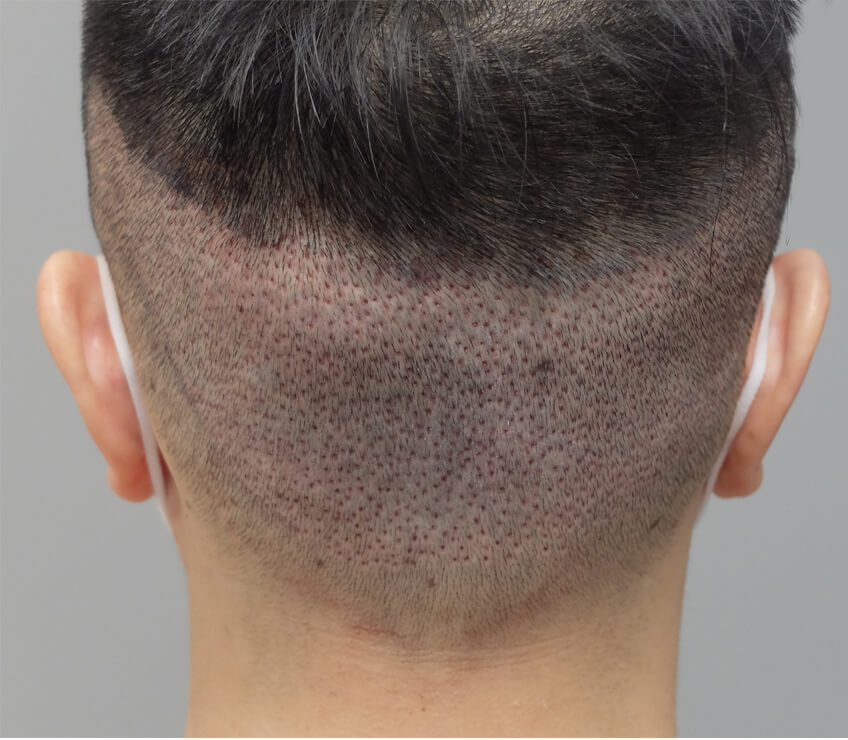
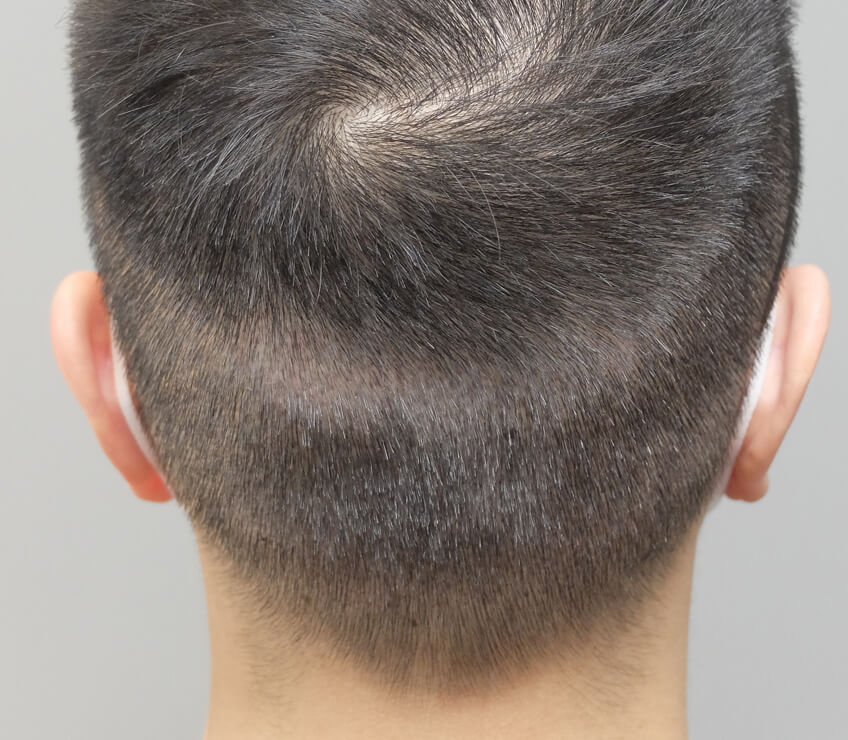
We're World Recognized FUE Expert
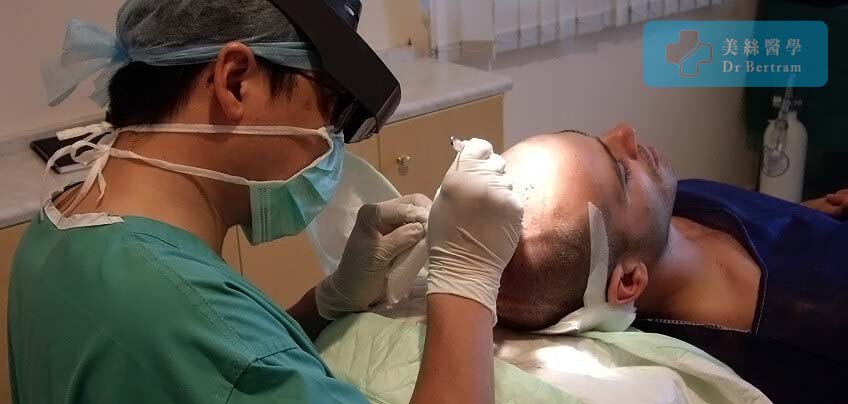
We are the only World FUE Institute ( WFI ) Fellow Member in Hong Kong and China !
FUE since 2006
We provided FUE hair transplant in Hong Kong since 2006, and is regarded as one of the FUE pioneers in Asian Hair. We are also one of the very fews that provide FUE-FUT Combined Technique.
Innovation - Sequential FUE Technique
In 2018 we presented our "Double Gun Technique" in ISHRS Annual Scientific Meeting in Canada, using both hands for excision and extraction simutaneously. In 2018 the ISHRS FUE Committee re-named it as "Sequential FUE Technique", and honored us as the first in the world to describe it.
Invention - Funnel FUE Punch
Graft transection is the main drawback in FUE. In 2017 we started to develop our own punch, Our punch has a wider opening in the shape of a funnel, and is known as the "Funnel Punch". With this we are able to markly reduce the transection rate. In 2017 our punch was on producion and now used by hair transplant surgeon all over the world.
Publication
In 2009 we published the article "FUE: Experience in the Chinese Population" in the Medical Journal of the International Hair Restoration Surgery (ISHRS). Though FUE had been popular in Europe and USA, our article was the first to address the application in Chinese based on our experience. This article attracted world attention and was later included in various textbooks. Our work was even published in Korea.
Presentation
We were invited to share our FUE technique in the following international conferences:
• ISHRS Annual Scientific Meeting in Montreal, Canada 2008
• ISHRS Asian Workshop in Bangkon, Thailand 2011
• AAHRS Annual Scientific Meeting in Seoul, Korea 2012
• WFI Annual Scientific Meeting in Lisbon, Portugal 2018
Surgery Demonstration
We performed FUE Live Surgery Demonstration in Taiwan (2007), Thailand (2008), and Mainland China (2011).
WFI Fellow Member
We were the only practitioner in Hong Kong and China invited as Fellow Member of the World FUE Institute.
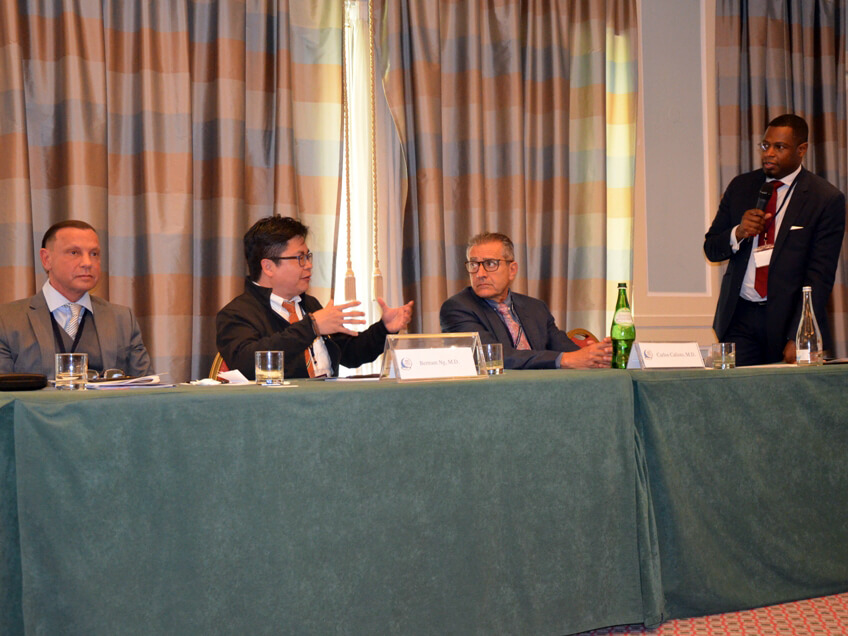
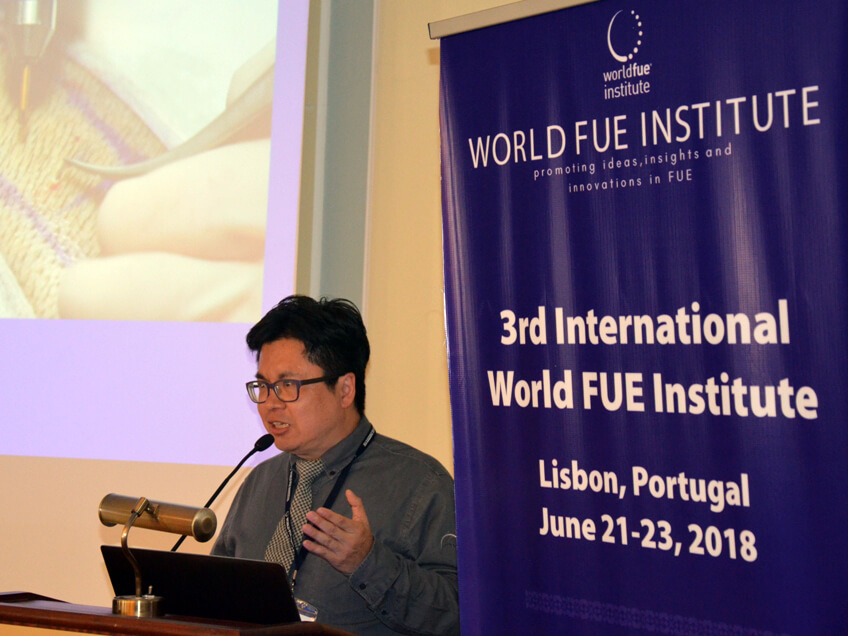
FUE Terminology
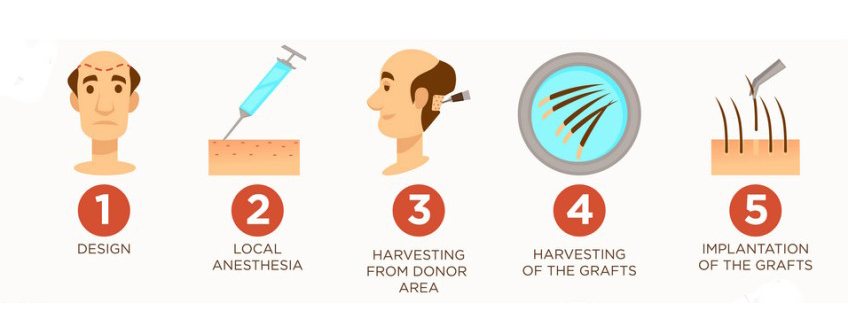
Confusion exists when the same technique comes with different names, mostly for the purpose of marketing as a unique or even secret technique. No matter what it is called, the basic principle of graft isolation remains the same. FUE can further be classified according to the instrument used to extract the follicles:
Wood's Technique
The first surgeon performing FUE was believed to be Dr Wood in Australia, who kept his technique a secret.
Inaba Method
Dr Inaba (Japan) described the same technique in his 1996 textbook "Androgenetic Alopecia".
Follicular Unit Extraction (FUE)
The term FUE was introduced by Dr. Rassman and Bernstein in 2002 in the United States, which gained popularity all over the world
Follicular Unit Excision (FUE)
Many hair transplant centers promotes FUE as a non-surgical procedure. In March 2018 the International Society of Hair Restoration Surgery (ISHRS) renamed FUE from Follicular Unit "Extraction" to Follicular Unit "Excision". The reason was to emphasise the highly-skilled, surgical nature of the procedure.
Sequential Technique
We deeveloped this technique in 2008 and called it "Double Gun Technique", when one hand performs the incision while the other hand immediately extracts the graft. It was later become popular in Europe. ISHRS FUE Committe later re-named this a " Sequential Technique".
Cole Isolation Technique (CIT)
Developed by Dr John Cole (USA) using his devoce and indtrument
Manual FUE
When extraction performed by hands only
Semi-Automatic FUE
When extraction is by hand and assisted by electric device
Automatic FUE
When extraction is by electric device only
ARTAS
It stands for extraction using a Robotic arm and setup

